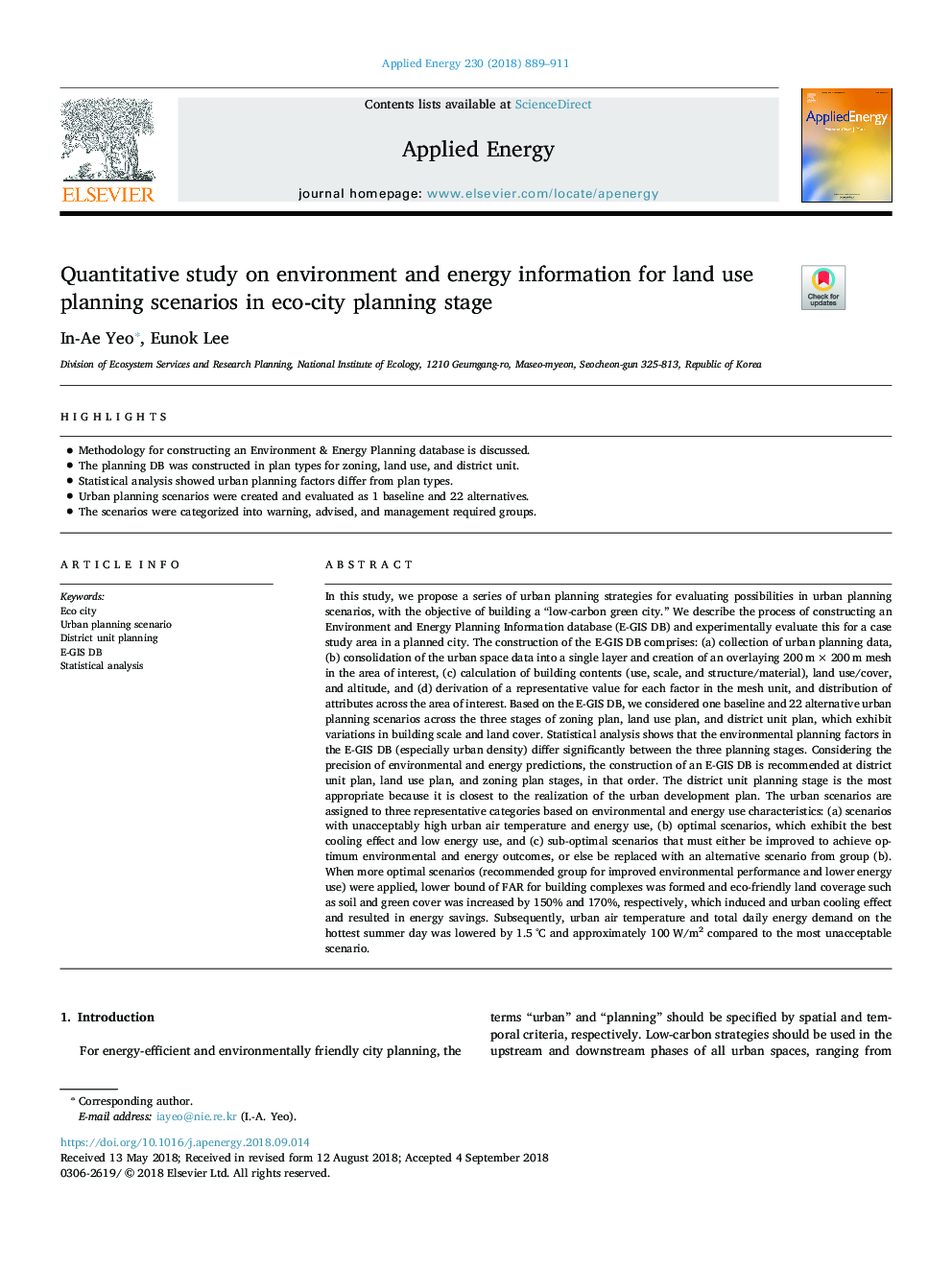| Article ID | Journal | Published Year | Pages | File Type |
|---|---|---|---|---|
| 10131422 | Applied Energy | 2018 | 23 Pages |
Abstract
In this study, we propose a series of urban planning strategies for evaluating possibilities in urban planning scenarios, with the objective of building a “low-carbon green city.” We describe the process of constructing an Environment and Energy Planning Information database (E-GIS DB) and experimentally evaluate this for a case study area in a planned city. The construction of the E-GIS DB comprises: (a) collection of urban planning data, (b) consolidation of the urban space data into a single layer and creation of an overlaying 200â¯mâ¯Ãâ¯200â¯m mesh in the area of interest, (c) calculation of building contents (use, scale, and structure/material), land use/cover, and altitude, and (d) derivation of a representative value for each factor in the mesh unit, and distribution of attributes across the area of interest. Based on the E-GIS DB, we considered one baseline and 22 alternative urban planning scenarios across the three stages of zoning plan, land use plan, and district unit plan, which exhibit variations in building scale and land cover. Statistical analysis shows that the environmental planning factors in the E-GIS DB (especially urban density) differ significantly between the three planning stages. Considering the precision of environmental and energy predictions, the construction of an E-GIS DB is recommended at district unit plan, land use plan, and zoning plan stages, in that order. The district unit planning stage is the most appropriate because it is closest to the realization of the urban development plan. The urban scenarios are assigned to three representative categories based on environmental and energy use characteristics: (a) scenarios with unacceptably high urban air temperature and energy use, (b) optimal scenarios, which exhibit the best cooling effect and low energy use, and (c) sub-optimal scenarios that must either be improved to achieve optimum environmental and energy outcomes, or else be replaced with an alternative scenario from group (b). When more optimal scenarios (recommended group for improved environmental performance and lower energy use) were applied, lower bound of FAR for building complexes was formed and eco-friendly land coverage such as soil and green cover was increased by 150% and 170%, respectively, which induced and urban cooling effect and resulted in energy savings. Subsequently, urban air temperature and total daily energy demand on the hottest summer day was lowered by 1.5â¯Â°C and approximately 100â¯W/m2 compared to the most unacceptable scenario.
Keywords
Related Topics
Physical Sciences and Engineering
Energy
Energy Engineering and Power Technology
Authors
In-Ae Yeo, Eunok Lee,
